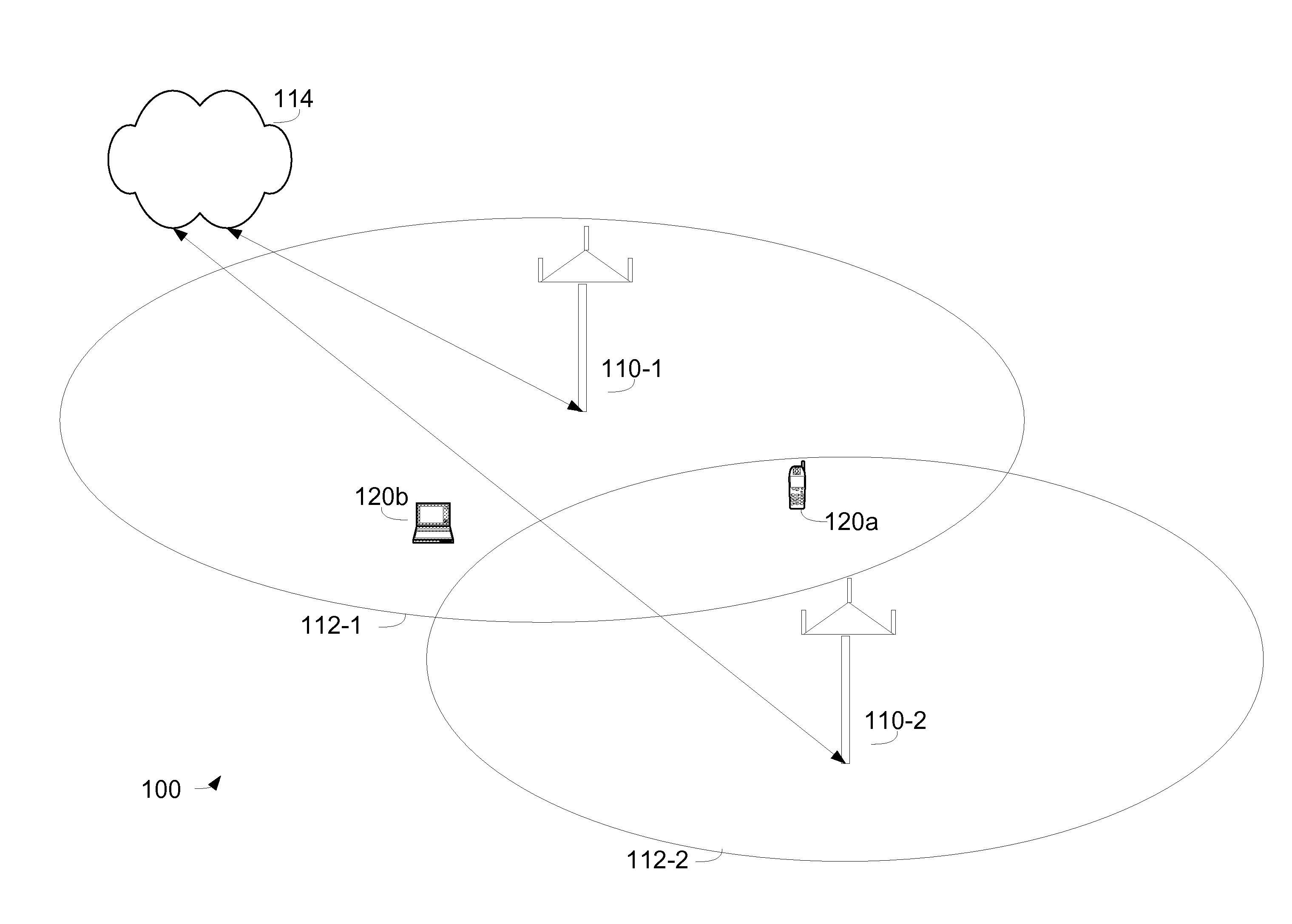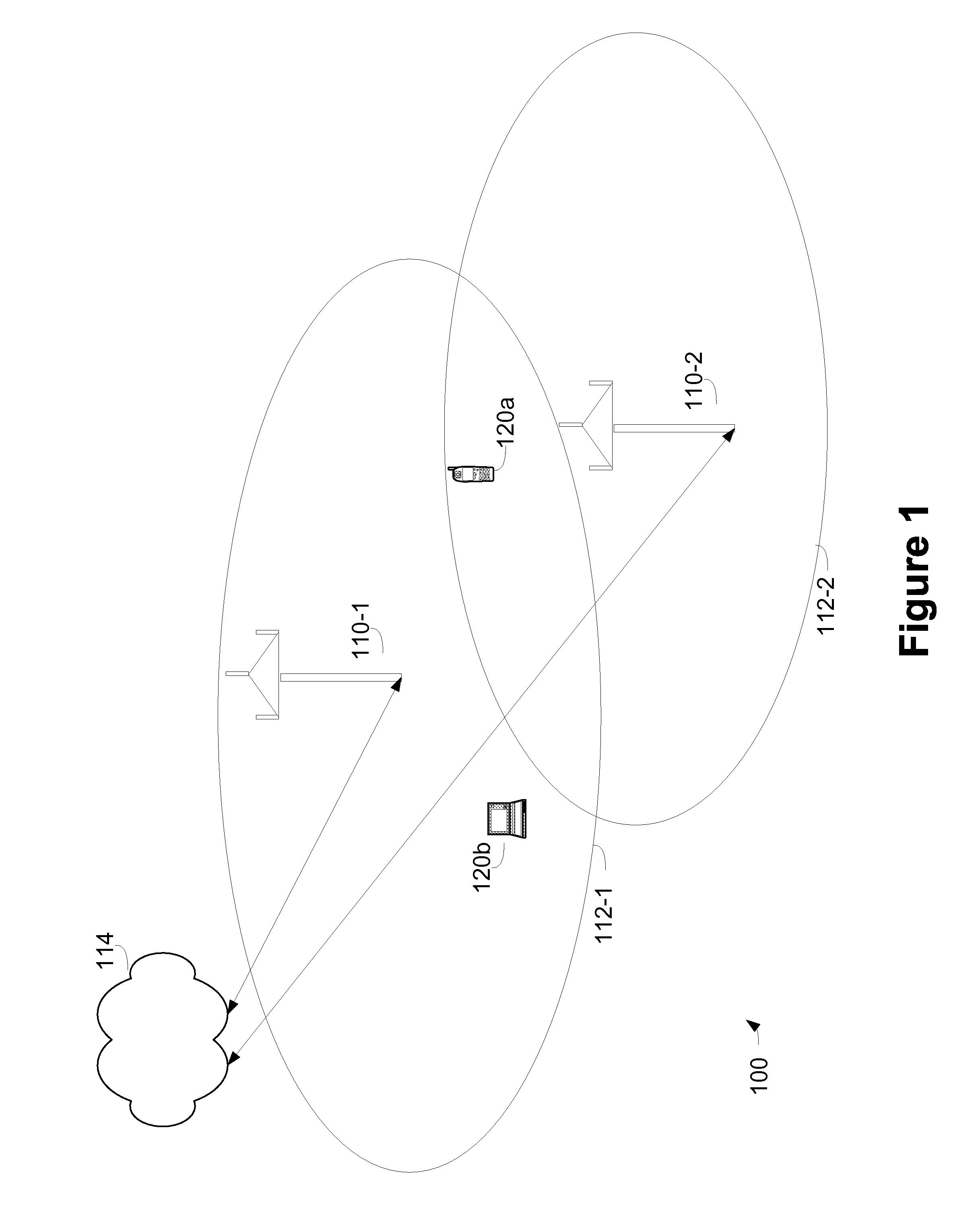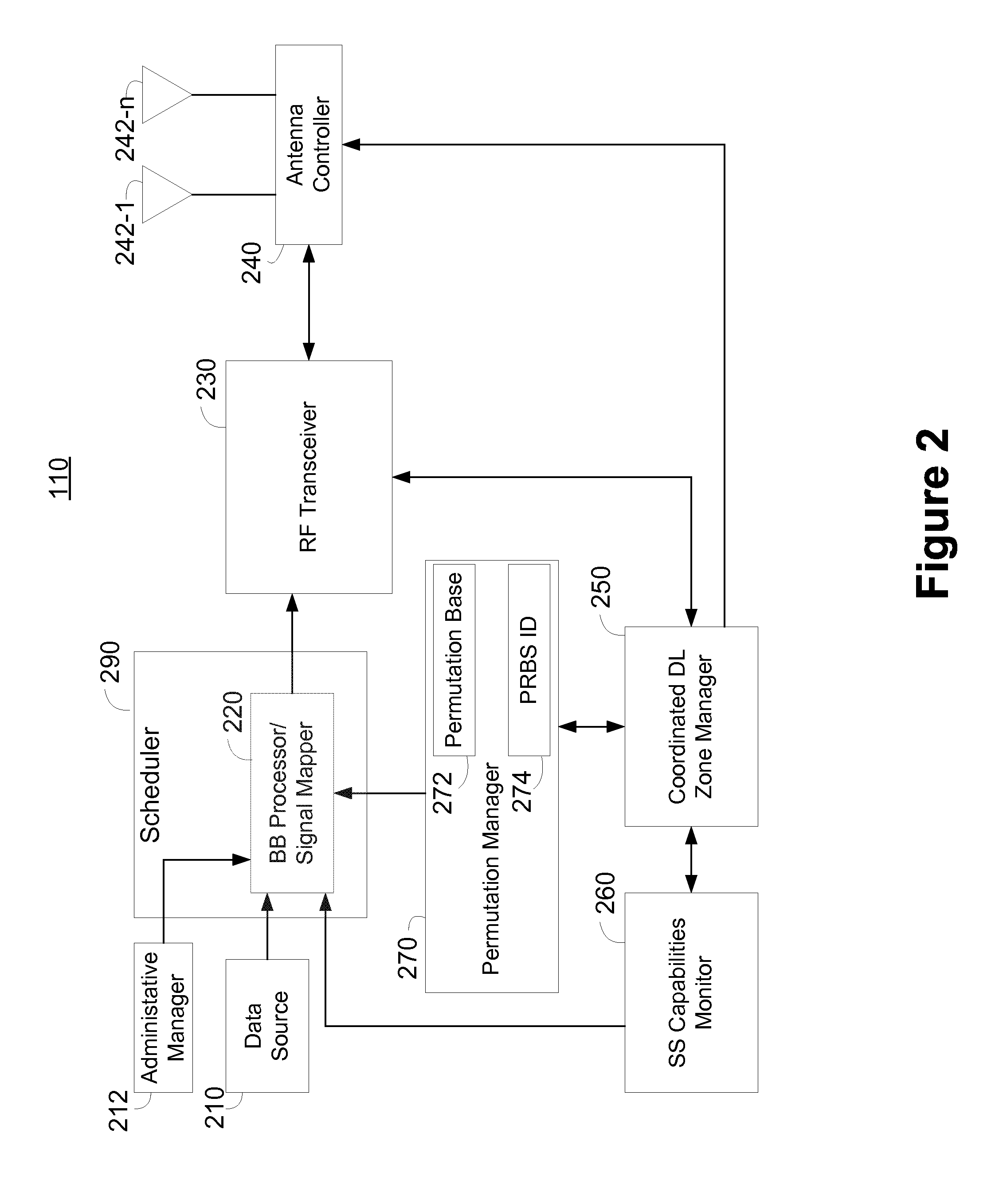Intercell interference mitigation
- Summary
- Abstract
- Description
- Claims
- Application Information
AI Technical Summary
Benefits of technology
Problems solved by technology
Method used
Image
Examples
Embodiment Construction
[0021]Methods and apparatus for intercell interference mitigation are described herein. The methods and apparatus may be applicable to several different types of wireless communication systems that are cell-based or otherwise service area-based. Without limiting the generality, the methods and apparatus for intercell interference mitigation can be applied to an Orthogonal Frequency Division Multiple Access (OFDMA) wireless communication system. Further, specific proposed changes to an OFDMA wireless standard, IEEE 802.16 Rev 2 / D2, hereby incorporated by reference herein in its entirety, are provided to enable the intercell interference mitigation methods and apparatus described herein to be implemented within an existing wireless system.
[0022]Although the methods and apparatus described herein are presented in the context to an OFDMA wireless communication system, and in particular a wireless communication system operating in accordance with an IEEE802.16 standard, the intercell int...
PUM
 Login to View More
Login to View More Abstract
Description
Claims
Application Information
 Login to View More
Login to View More - R&D
- Intellectual Property
- Life Sciences
- Materials
- Tech Scout
- Unparalleled Data Quality
- Higher Quality Content
- 60% Fewer Hallucinations
Browse by: Latest US Patents, China's latest patents, Technical Efficacy Thesaurus, Application Domain, Technology Topic, Popular Technical Reports.
© 2025 PatSnap. All rights reserved.Legal|Privacy policy|Modern Slavery Act Transparency Statement|Sitemap|About US| Contact US: help@patsnap.com



